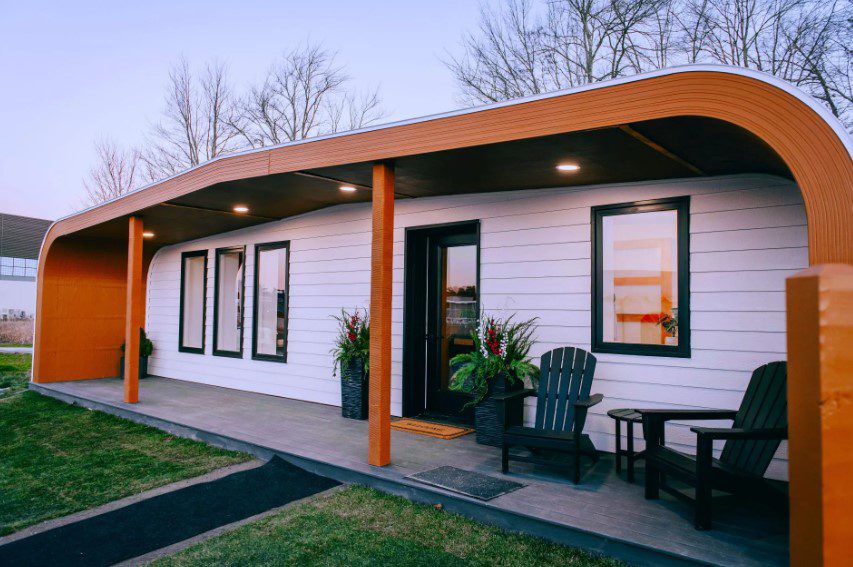
A recyclable 3D-printed home made from natural materials has been revealed to the public, and this may only be the beginning.
The design is part of a project to create a “factory of the future” for sustainable, eco-friendly home development by way of 3D printing technology. The 600-square-foot home, composed of wood fibers and sawmill waste, known as bio-resins, was the creation of researchers from the University of Maine.
This new type of home is a breakthrough considering how current 3D technology used to build homes often requires materials that create lots of carbon pollution when produced, like the concrete needed to build the walls. The new homes do not use concrete, instead using wood components, except for the foundation.
The first fully 3D-printed house was displayed to the public in Beckum, Germany, in 2021. According to an article from Inhabitat, Janet Mills, the governor of Maine, said homes like the newly printed one could be a solution to Maine’s housing shortage of 20,000 units.
Traditional construction generates 27% of planet-warming gases globally. 3D-printed houses produce much less waste than conventional construction since builders only need to print exactly what they need, and minimal space is needed for storage materials.
Also, there is no need for energy consumption that is normally required to move the same parts from one place to another.
Good news, green hacks, and the latest cool clean tech — straight to your inbox every week!
Companies in the building technology space are catching wind of this shift. Mighty Buildings, a 3D printing construction company from California, has partnered with Fortera, a materials technology company that produces eco-friendly cement.
Four billion tons of cement are produced each year, contributing 8% of global carbon emissions. Fortera’s eco-friendly cement reduces harmful carbon pollution by 60% compared to traditional cement.
Aside from being much more environmentally sustainable, creating 3D-printed houses may also become more cost-effective sooner than later. According to German architect Waldemar Korte, this homebuilding method of the future may become cheaper than traditional methods within the next five years.
“We are much faster at building,” Korte said to Deutsche Welle. Korte’s 3D-printed home was built in four days. “We need fewer people, and that helps when you have a dearth of skilled people in the industry.”
According to UN-Habitat, as many as three billion people will be in need of better housing by the end of this decade. 3D printing technology for building houses can help solve this issue in an efficient and environmentally sustainable manner.
The world’s first 3D-printed neighborhood has already been created in Mexico. Meanwhile, a 2021 report stated that the global 3D construction market will grow by 91% between 2021 and 2028.
Considering recent advances in artificial intelligence, the next 3D-printed homes may be getting propped up sooner than many of us would have expected.
Join our free newsletter for weekly updates on the coolest innovations improving our lives and saving our planet.
Cool Picks